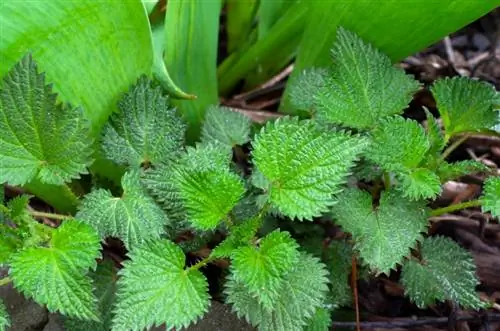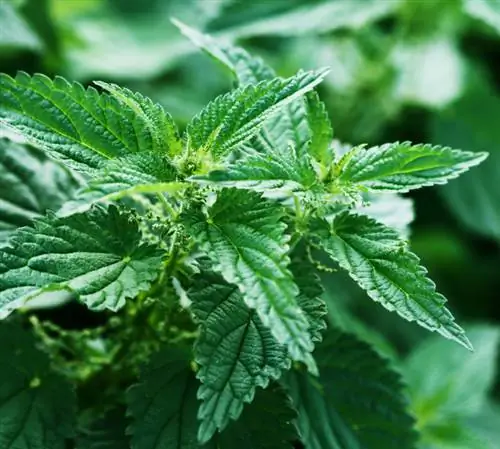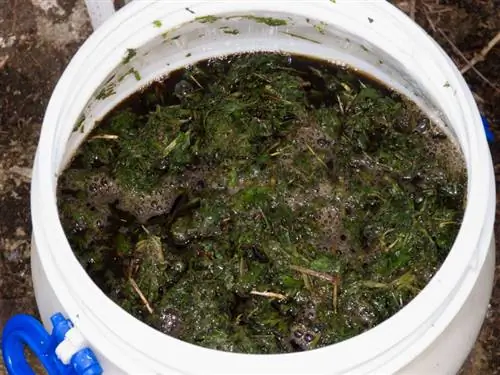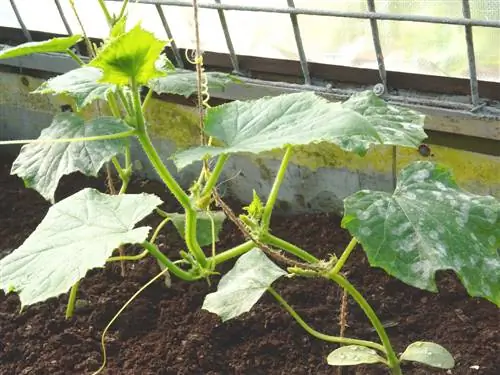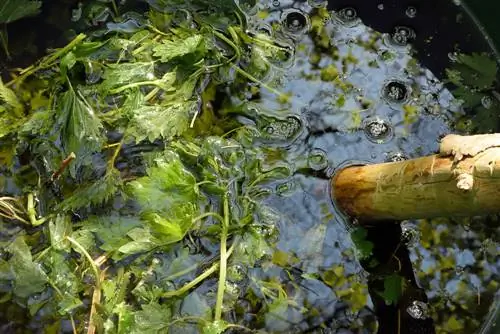- Author admin [email protected].
- Public 2023-12-16 16:46.
- Last modified 2025-06-01 06:02.
Whether for eating, making tea or making a manure - the nettle can be used in a variety of ways. There are definitely many reasons for growing stinging nettles
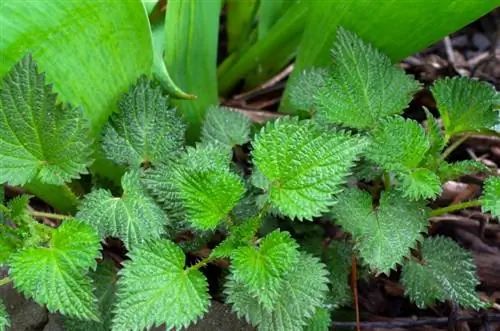
How and where should you plant stinging nettles?
Stinging nettles prefer a partially shaded location with nutrient-rich, humus-rich, moist and permeable soil. They can be propagated by root suckers or seeds. The optimal harvest time is from the end of April/beginning of May to the end of June and they are well suited as planting partners for vegetable plants and fruit trees.
Which location does the nettle prefer?
Stinging nettles prefer to grow in partial shade. They can't get used to full sun and yet they sometimes make this compromise - better than not growing at all. Stinging nettles can also thrive in the shade.
What should the soil be like?
If you want to plant stinging nettles, you should choose the right substrate. Stinging nettles need lots of nutrients and especially nitrogen. The substrate in which you plant the nettles should have the following properties:
- nutrient-rich
- humos
- moist
- permeable
How can the stinging nettle be propagated?
In the wild, these plants reproduce most strongly through root runners. Over time they form entire carpets and seem to literally proliferate. Stinging nettles can be easily propagated with your own hands using runners and seeds.
How and when are the seeds sown?
Some nettle seeds have difficulty germinating. This is especially true for direct sowing. If you want to propagate the nettles from seeds, note the following:
- Pre-cultivation at home or in the greenhouse is recommended
- Period: early March to mid-May
- Minimum germination temperature: 10 °C
- Germination time: 10 to 14 days
- Distance between plants: 25 cm
- Sowing depth: max. 0.5 cm (light germinator)
When is harvest time?
Stinging nettles can be harvested throughout their entire growing season. The optimal harvest period is from the end of April/beginning of May to the end of June. Then comes the flowering period. The flowers are present from July to September.
Which plant neighbors are suitable?
Ideal planting partners for stinging nettles are those that are prone to pests such as aphids. All vegetable plants are suitable as planting partners. Stinging nettles also feel at home next to or under fruit trees and bushes.
Tip
If you plant the nettle, you should be aware that it grows quickly thanks to its root runners. Once it has formed an entire sea, it is difficult to fight again. The cultivation should therefore be carefully considered!

